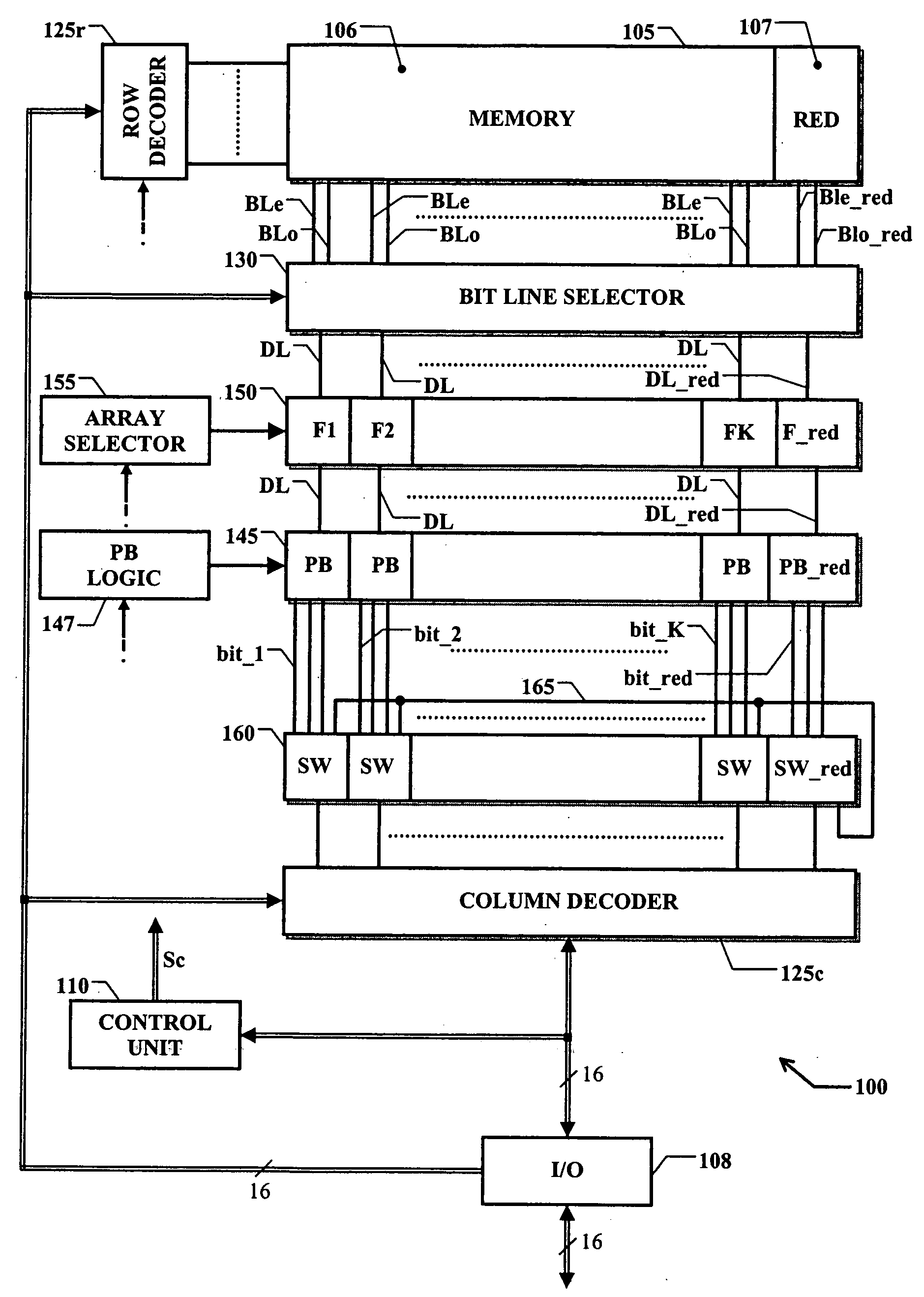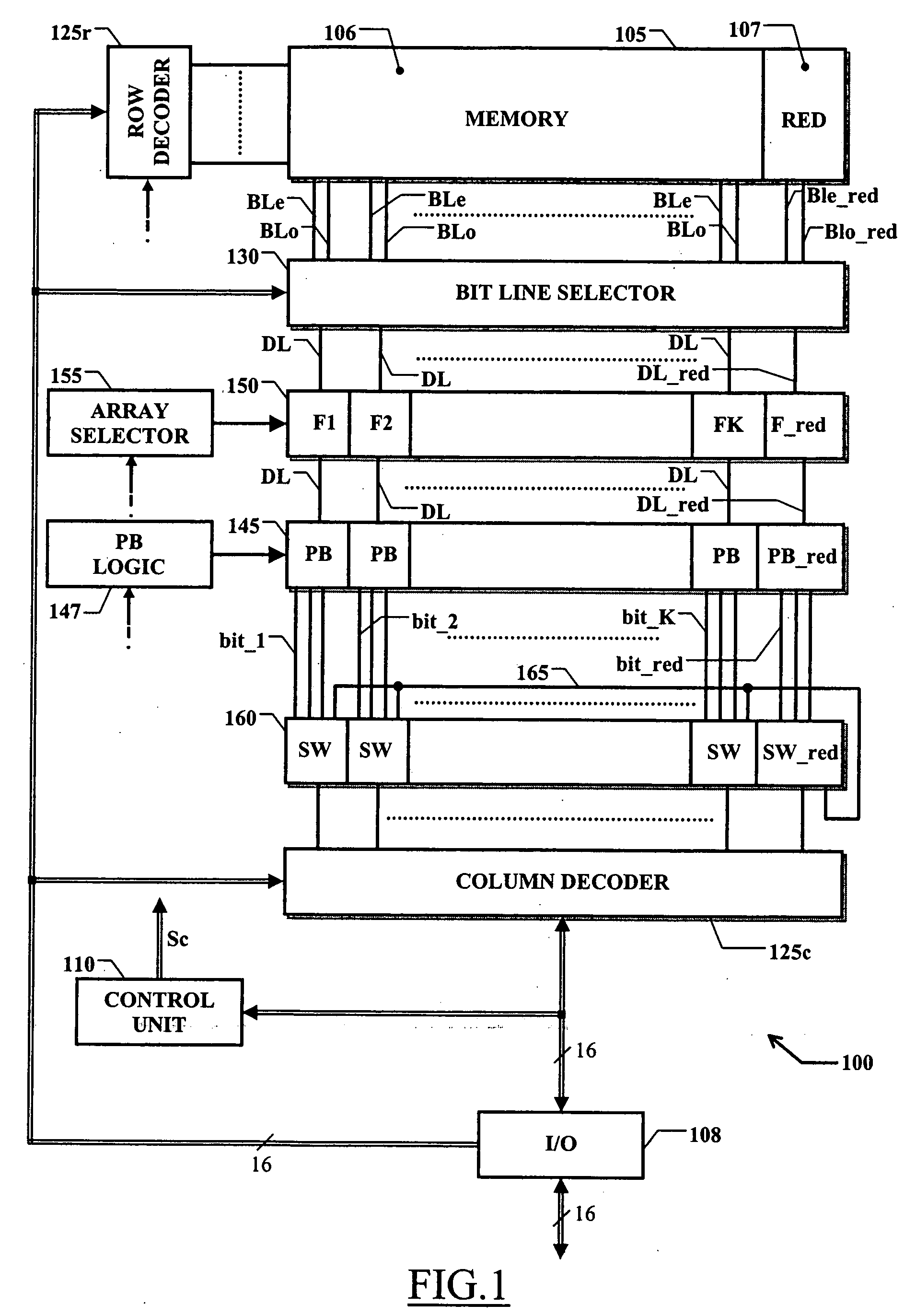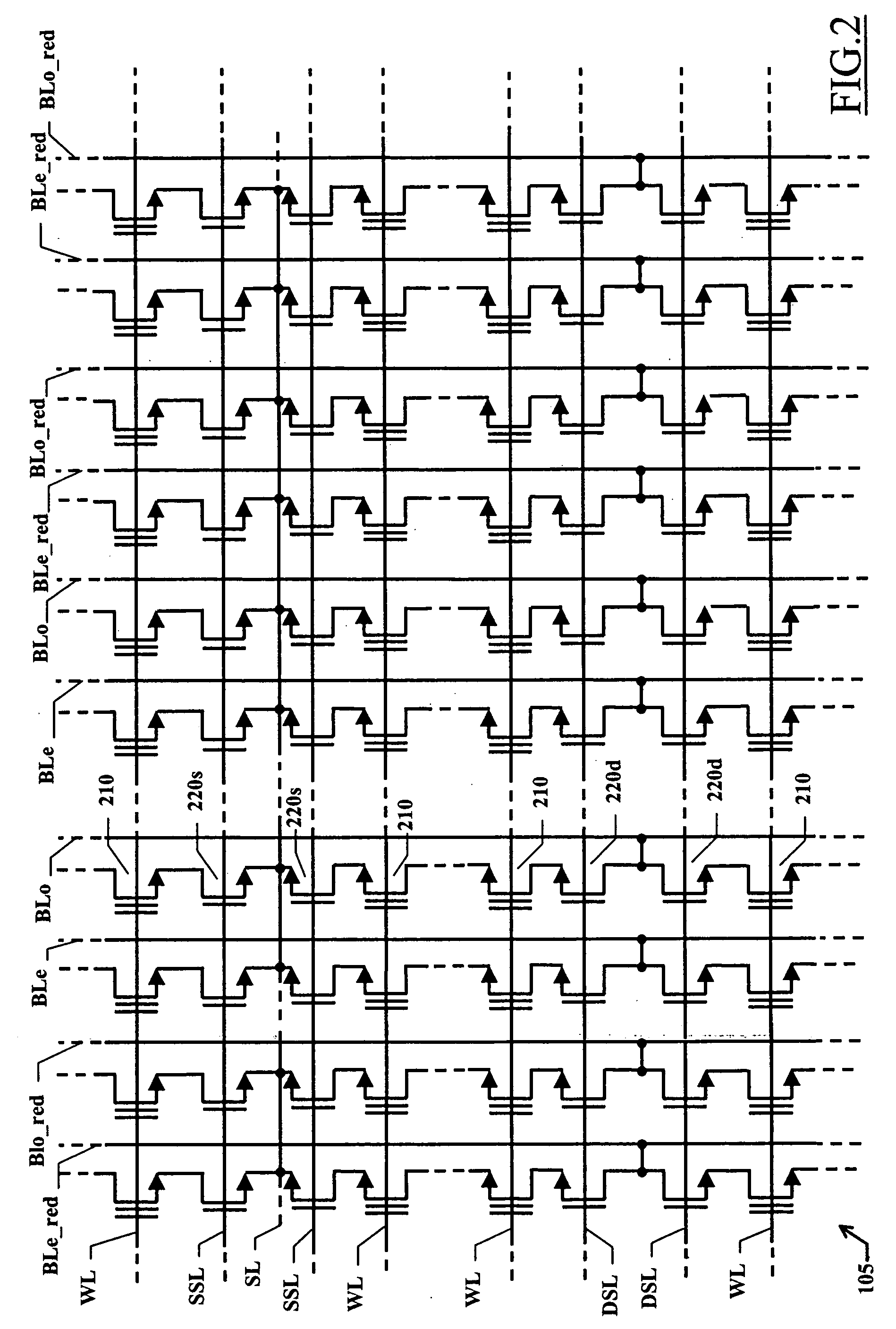Programmable memory device with an improved redundancy structure
a memory device and redundancy structure technology, applied in the field of solid-state memories, can solve the problems of increasing the complexity of the whole device, increasing the required area of the control circuitry, and affecting so as to reduce the waste of occupied area in the chip, improve the performance of the memory device, and reduce the waste of occupied area
- Summary
- Abstract
- Description
- Claims
- Application Information
AI Technical Summary
Benefits of technology
Problems solved by technology
Method used
Image
Examples
Embodiment Construction
[0029] With reference to the drawings, FIG. 1 is a schematic block diagram of a memory device 100 according to an embodiment of the present invention, particularly an electrically-programmable, non-volatile memory, such as a flash memory. The flash memory 100 is integrated in a chip of semiconductor material and includes a matrix 105 of memory cells having a so-called NAND architecture (described in greater detail in the following).
[0030] The matrix of memory cells is logically partitioned into a memory portion 106 and a redundancy portion 107. The memory portion 106 includes a number Mc of columns of memory cells for storing data bits. The redundancy portion 107 includes a number Mr of redundancy columns of memory cells (hereinafter referred to as redundancy cells) for storing data bits in place of the memory cells of the memory portion 106 that are defective.
[0031] Each column of memory cells in even position is controlled by a corresponding bit line BLe, and each column of memo...
PUM
 Login to View More
Login to View More Abstract
Description
Claims
Application Information
 Login to View More
Login to View More - R&D
- Intellectual Property
- Life Sciences
- Materials
- Tech Scout
- Unparalleled Data Quality
- Higher Quality Content
- 60% Fewer Hallucinations
Browse by: Latest US Patents, China's latest patents, Technical Efficacy Thesaurus, Application Domain, Technology Topic, Popular Technical Reports.
© 2025 PatSnap. All rights reserved.Legal|Privacy policy|Modern Slavery Act Transparency Statement|Sitemap|About US| Contact US: help@patsnap.com



